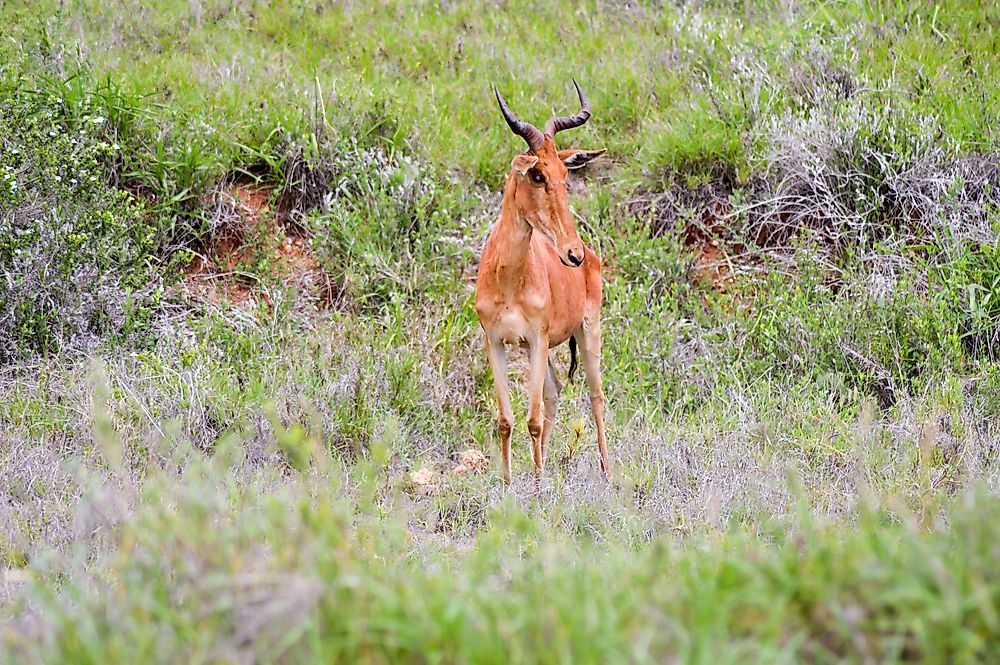Somalia's Endangered Mammals

Somali wild dogs, Somali wild asses, and hirolas each face grave threats in Somalia. Somalia consists of arid and semi-arid regions, and it is home to more than 170 mammal species. These mammals range from shrews, rats, and hedgehogs to elephants and giraffes. Most of these animals are endangered in the country.
Somalia's Endangered Mammals
Somali Wild Ass (Equus Africanus somaliensis)
The Somali wild ass inhabits the northeastern region of Somalia, in arid and semi-arid grasslands, and bushlands. It is a subspecies of the African wild ass. The animal appears gray with a white belly. It is characterized by horizontal black and white stripes on its legs. The animal’s narrow and small hooves aid it to move quickly. Its tail is tufted and it is upright and thin.The Somali wild ass lives in small herds and uses kicks as protection from predators. The herds are not permanent due to inadequate food in the arid habitats. The animals feed on grasses as well as shrubs and desert plants and are most active at dawn and dusk. The gestation period goes for nearly a year, and the female is ready to breed at two years of age. The Somali wild ass's environmental status is critically endangered, and it is continuously threatened by hunting for medicine or food, competition with livestock, political unrest, and climate change. No designated reserve exists for the animal in Somalia.
Hirola (Beatragus hunteri)
The hirola is an antelope species roaming the border of Somalia and Kenya. It prefers open grassy plains, and feeds on grass, specializing on the newly sprouted vegetation. The animal migrates consistently in pursuit of new vegetation. The hirola’s coat is sandy-colored with a long nose, ears, and legs and a short neck. Around the eyes are white eyebrows, and it has two long curved horns used for defense. The hirola is a large antelope, and moves in groups of between 5 and 40 individuals. Males are territorial and keep about 7 to 8 females in a herd. Breeding occurs between March and April and males mate after fending off other dominant males, mostly at 3 or 4 years of age. The hirola population has been severely declining as a result livestock competition, diseases, habitat loss, and predation.
Somali Wild Dog (Lycaon pictus somalicus)
The Somali wild dog is a subspecies of the larger African wild dog species. In Somalia, the animal inhabits semi-desert and stony deserts habitats. The animal’s coat is coarse, and it is smaller than the East African wild dog subspecies. The female give birth to one young one after 377-389 days. In the wild, the animal has a life expectation of 20 years. It is continuously threatened by other animals and human activities.
Challenges to Wildlife Conservation in Somalia
The civil war in Somalia has had an adverse impact on conservation. It has made implementation of conservation policies difficult as well as hampering the efforts of relevant institutions and agencies. The displacement of people has caused the settling of refugees in areas previously inhabited by wildlife. Activities carried out by these groups of people such as livestock grazing, and agriculture has led to habitat loss.
Somalia's Endangered Mammals
| Somalia's Endangered Mammals | Scientific Name |
|---|---|
| Somali Wild Ass | Equus africanus somaliensis |
| Hirola | Beatragus hunteri |
| Somali Wild Dog | Lycaon pictus somalicus |











